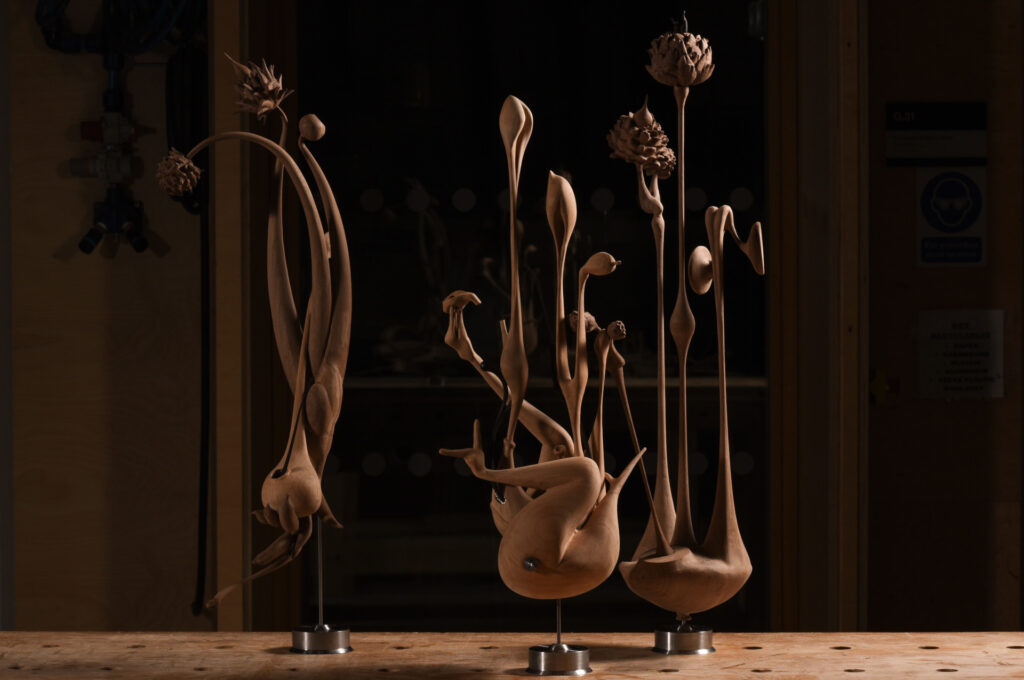Have you ever felt you are just one of many? Not of your own type, but of many other types? That, in most ways, your type is but one on a list of many hundreds, so much so that it is minute and insignificant?
What most would interpret as an exercise in being small, William Victor Camilleri’s The Struggle for Existence is actually one in being in the world. Hosted in a garden construct, this project opens a window to different worlds belonging to different species that thus have different (and several) socio-botanical relations between them. Simultaneously present, and yet largely overlooked, the humble co-existence of these elements forge dependencies in nature that, in Camilleri’s interpretation of Charles Darwin’s seminal work On the Origin of Species (1859), are exposed in the designation of ‘the garden’. Besides adhering to the typology of architecture, the idea of the garden enables the project to identify a pleasant common ground where both man and nature can interact.
Its creator uses conceptual elements from his country of birth, to include identifiable Maltese botanical organisms in order to give birth to quasi-familiar forms. The objects are entities that can be observed on the garden’s behalf; subjects that discuss the structure within it. Through their form, they allow for glimpses inside the world they embody – a timeline of nature sculpted as a tapestry of events. Typified by socio-botanical narratives, the collection of objects is an assemblage of occurrences that lead to any form of produce in the garden. A yield, an interaction, a new life, or the passing of one, and through this program, the objects feed from one another and breed.
The Design
The relationship between the object and the observer is the basis upon which the design process progressed. At the onset, the creator intended to keep from the observer the making methods, tooling and assembly joints. In turn, the observer is invited to presume the realisation of the objects from what is apparent rather than what is concealed – an experience congruently shared between the gardener and the plants.
A body of ideas can be solidified in the digital realm, but its physical self cannot be necessarily manufactured as is, and as a result, the made and the proposed digital object are separated from each other. In the translation from vision to object, the deviance of the methodology lies in its ambiguous execution. The process is acceptant that the physical manifestation will not adhere to the digital interpretation.
Throughout the whole process, the maker’s role fluctuates between the designer, programmer, and operator, ensuring that the work successfully transitions from a vision to various stages of digital iterations; and from a set of commands to a processed material, before the maker assumes back control. Consecutively, the machine, reliant on her master who purposely opts for the removal of material, acts on maker’s instructions. The material, in the process, becomes an object.
The Making
In making the project, machining is used to remove excess material and reveal the objects; the process in itself is almost carnal, akin to undressing a flower of its petals, or tearing into a body to access the heart. With the added factor of automation, the maker envisages the material as his captive at the mercy of a machine that hacks away at its body. Now operator, the maker is aware of the restraints by which an acceptable outcome is generated and thus, guides the machine’s hands.
The elements are produced out of timber and metal, machined out of one piece and for multi-parts or bulky forms, the ‘organism’ is broken down into smaller parts and laid flat to process its inaccessible surfaces or hollow innards. Consequently, a pre-processed program – a computerised simulated pathway – is generated for the machine to morph the materials into an assembly kit.
The tool-shaped surfaces provide a poetic alikening to ridges defined by sunlight on the plant forms, most of which are eventually hidden from the observers upon the joining of individual parts. The machine’s projection distorts the digital model through its interpretation of the code, dismissing undercut ‘limbs’ and produces an augmented display of body lengths, thus distorting the digital reading of object-centric measurements.
The Studio
William Victor Camilleri is an architect, artist, maker, and Teaching Fellow at The Bartlett School of Architecture. He received his Bachelor’s degree in Architecture and Civil Engineering from the University of Malta, practiced in Switzerland, and subsequently attained a Master’s in Architectural Design at The Bartlett School of Architecture, where he is currently pursuing a doctoral degree.
William Victor’s research and expertise in and around digital manufacturing and filmography has been featured in media and exhibited in venues such as Ars Electronica (Austria) and the Vitra Design Museum (Germany).



